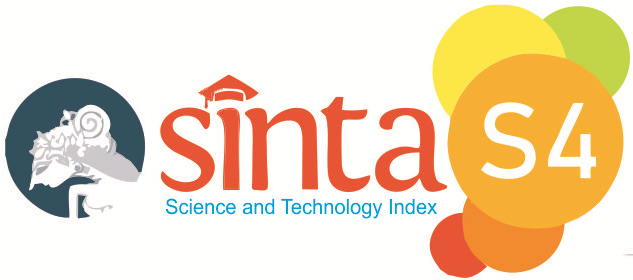AI in mathematics education: Potential ranging from automation to personalized learning
DOI:
https://doi.org/10.32332/46xc9p64Keywords:
artificial intelligence, mathematics education, literature review, learning innovation, education technologyAbstract
The rapid development of artificial intelligence (AI) is reshaping many aspects of education, yet its meaningful contribution to mathematics instruction and student learning outcomes remains underexplored. Understanding how AI can enhance mathematical thinking, problem-solving, and personalized learning is critical in preparing students for future competencies. One of the challenges in learning mathematics is how to make it relevant to the times. One emerging approach was using artificial intelligence (AI) in mathematics education. Based on a literature review, this study aimed to explore and describe the potential of artificial intelligence (AI) in mathematics education. The method used was a literature review with a narrative design. Literature searches were conducted through reputable international sites such as Scopus, ScienceDirect, Springer, and World Scientific, with English keywords and years from 2015 to 2025. The collected literature was thematically analyzed to identify key themes such as AI usage trends, AI development potential, and implementation challenges. The results indicated that AI was increasingly used in mathematics education, particularly in various AI-assisted instructional tasks. Further potential in AI shows promise in personalizing learning and automating tasks, though challenges remain. In conclusion, AI is promising to transform mathematics education through adaptive, individualized, and data-informed learning approaches. However, its success depended on careful planning, teacher readiness, ethical frameworks, and alignment with educational goals and local contexts. These findings underscored the need for further research and context-specific development to ensure AI's effective and equitable integration into mathematics learning environments.
References
al Darayseh, A., & Mersin, N. (2025). Integrating generative AI into STEM education: Insights from science and mathematics teachers. International Electronic Journal of Mathematics Education , 20(3). https://doi.org/10.29333/IEJME/16232
Bewersdorff, A., Hartmann, C., Hornberger, M., Seßler, K., Bannert, M., Kasneci, E., … Nerdel, C. (2025). Taking the next step with generative artificial intelligence: The transformative role of multimodal large language models in science education. Learning and Individual Differences, 118, 102601. https://doi.org/10.1016/j.lindif.2024.102601
Cresswell, J. W., & Poth, C. N. (2023). Qualitative inquiry and research design: choosing among five approaches (5th ed.). SAGE Publications.
Daineko, Y., Tsoy, D., Ipalakova, M., Mustafina, A., Bolatov, Z., & Samala, A. D. (2024). Development of the Software agent «AIA» in the framework of IITU MetaUniversity Design. Procedia Computer Science, 238, 870–875. https://doi.org/10.1016/j.procs.2024.06.105
Djajasoepena, R., Setiawan, I., Bhakti, M. A. C., Purnomo, A. T., Ayu, M. A., Alibasa, M. J., & Wandy, W. (2024). Utilization of artificial intelligence to support the development of teaching and project modules. Journal of Community Services: Sustainability and Empowerment, 4(01), 7–11. https://doi.org/10.35806/jcsse.v4i1.440
Dubey, A., & Yadav, A. (2024). New era’s of artificial intelligence in pharmaceutical industries. Asian Journal of Pharmaceutical Research and Development, 12(2), 71–76. https://doi.org/10.22270/AJPRD.V12I2.1362
Eşer, G., Duman, Ş. B., Bayrakdar, İ. Ş., & Çelik, Ö. (2023). Classification of temporomandibular joint osteoarthritis on cone beam computed tomography images using artificial intelligence system. Journal of Oral Rehabilitation, 50(9), 758–766. https://doi.org/10.1111/JOOR.13481
Fahrudin, R., Sollikhin, R., & Masruroh, A. (2024). Inovasi pembelajaran pendidikan agama Islam melalui teknologi artificial intelligence untuk meningkatkan interaksi siswa. Mauriduna: Journal of Islamic Studies, 5(1), 79–91. https://doi.org/10.37274/MAURIDUNA.V5I1.1298
Flavin, E., Hwang, S., & Morales, M. (2025). “Let’s Ask the Robot!”: Epistemic Stance Between Teacher Candidates Toward AI in Mathematics Lesson Planning. Journal of Teacher Education. https://doi.org/10.1177/00224871251325079
Fushimi, K., Nakai, Y., Nishi, A., Suzuki, R., Ikegami, M., Nimura, R., … Hasunuma, T. (2025). Development of the autonomous lab system to support biotechnology research. Scientific Reports, 15(1), 6648. https://doi.org/10.1038/s41598-025-89069-y
Gonçalves, R. P., Spaniol, M. J., Rowland, N. J., & Rytter, N. G. M. (2025). Reflections on building an artificial intelligence bot to prepare students to engage in strategic conversations during foresight fieldwork. Futures & Foresight Science, 7(1), e202. https://doi.org/10.1002/FFO2.202
Green, B. N., Johnson, C. D., & Adams, A. (2006). Writing narrative literature reviews for peer-reviewed journals: secrets of the trade. Journal of Chiropractic Medicine, 5(3), 101–117. https://doi.org/10.1016/S0899-3467(07)60142-6
Hwang, S., Flavin, E., & Lee, J.-E. (2023). Exploring research trends of technology use in mathematics education: A scoping review using topic modeling. Education and Information Technologies, 28(8), 10753–10780. https://doi.org/10.1007/s10639-023-11603-0
Kementerian Pendidikan dan Kebudayaan Republik Indonesia. (2016). Peraturan Menteri Pendidikan dan Kebudayaan Nomor 21 Tahun 2016 tentang Standar Isi Satuan Pendidikan Dasar dan Menengah. Berita Negara Republik Indonesia Tahun 2016 Nomor 954.
Laksana, F. S. W., & Fiangga, S. (2022). The development of web-based chatbot as a mathematics learning media on system of linear equations in three variables. MATHEdunesa, 11(1), 145–154. https://doi.org/10.26740/mathedunesa.v11n1.p145-154
Lee, K.-H., Shin, D., Park, J., Kim, Y., & Lee, S. H. (2024). Exploring the use of ChatGPT in mathematical problem solving competency education: An analysis of error diagnosis and feedback performance in solving word problems on division of fractions. Korean School Mathematics Society, 27(4), 639–666. https://doi.org/10.30807/ksms.2024.27.4.008
Loamy. (2024). Pesan Wamendikti Soal AI: Jangan Sampai Buat Kita Malas Berkarya. Retrieved April 3, 2025, from CNN Indonesia website: https://www.cnnindonesia.com/teknologi/20241115175814-185-1167130/pesan-wamendikti-soal-ai-jangan-sampai-buat-kita-malas-berkarya
Martínez, S., Garcia-Haro, J. M., Monje, C. A., & Balaguer, C. (2019). Development of Applications for Humanoid Robots Using Multiple Platforms, Tools, and Cloud Data Sharing. International Journal of Humanoid Robotics, 16(06), 1950043. https://doi.org/10.1142/S0219843619500439
Muawanah, U., Marini, A., & Sarifah, I. (2024). The interconnection between digital literacy, artificial intelligence, and the use of E-learning applications in enhancing the sustainability of Regional Languages: Evidence from Indonesia. Social Sciences & Humanities Open, 10, 101169. https://doi.org/10.1016/j.ssaho.2024.101169
NCTM. (2000). Principles and Standards for School Mathematics. NCTM.
Nofridasari, E. A., & Hidayati, D. (2023). Transformasi digital dan penguatan karakter pancasila di sekolah dasar: strategi era society 5.0. Jurnal Pendidikan Dasar, 14(2), 222–228. https://doi.org/10.21009/JPD.V14I2.38890
Park, J., & Son, H. (2024). Exploring the functionality and utilization potential of ChatGPT-4o in mathematics education: Focusing on 7th-grade mathematics. Korean School Mathematics Society, 27(4), 495–520. https://doi.org/10.30807/ksms.2024.27.4.001
Pujiono, I. P., Prayogi, A., Shofiani, R., Yuliyanti, T., & Iskarim, M. (2024). Pemanfaatan artificial intelligence untuk mendukung tugas guru di SMA Negeri 1 Bodeh. PARAMETER: Jurnal Pendidikan Universitas Negeri Jakarta, 36(1), 77–89. https://doi.org/10.21009/PARAMETER.361.05
Rizos, I., Foykas, E., & Georgakopoulos, S. V. (2024). Enhancing mathematics education for students with special educational needs through generative AI: A case study in Greece. Contemporary Educational Technology, 16(4), ep535. https://doi.org/10.30935/cedtech/15487
Savitri, D. (2023). Soal ChatGPT, dosen hukum UGM: sebaiknya dilarang di universitas. Retrieved March 12, 2025, from DetikEdu website: https://www.detik.com/edu/perguruan-tinggi/d-6620083/soal-chatgpt-dosen-hukum-ugm-sebaiknya-dilarang-di-universitas?
Sekara, V., Karsai, M., Moro, E., Kim, D., Delamonica, E., Cebrian, M., … Garcia-Herranz, M. (2024). The opportunities, limitations, and challenges in using machine learning technologies for humanitarian work and development. Advances in Complex Systems, 27(3). https://doi.org/10.1142/S0219525924400022;WGROUP:STRING:WSPC
Smolić, E., Pavelić, M., Boras, B., Mekterović, I., & Jagušt, T. (2024). LLM Generative AI and Students’ Exam Code Evaluation: Qualitative and Quantitative Analysis. 2024 47th MIPRO ICT and Electronics Convention (MIPRO), 1261–1266. IEEE. https://doi.org/10.1109/MIPRO60963.2024.10569820
Wahyudin, Riza, L. S., & Putro, B. L. (2018). Development of cyberblog-based intelligent tutorial system to improve students learning ability algorithm. Journal of Physics: Conference Series, 012157. https://doi.org/10.1088/1742-6596/1013/1/012157
Welleck, S., Liu, J., Lu, X., Hajishirzi, H., & Choi, Y. (2022). NaturalProver: Grounded Mathematical Proof Generation with Language Models. Advances in Neural Information Processing Systems, 35. Retrieved from https://arxiv.org/pdf/2205.12910
Wulff, P., Kubsch, M., & Krist, C. (2025). Natural Language Processing and Large Language Models. https://doi.org/10.1007/978-3-031-74227-9_7
Yulianti, G., Benardi, Permana, N., & Wijayanti, F. A. K. (2023). Transformasi Pendidikan Indonesia: Menerapkan Potensi Kecerdasan Buatan (AI). Journal of Information Systems and Management (JISMA), 2(6), 102–106. https://doi.org/10.4444/JISMA.V2I6.1076
Downloads
Published
Issue
Section
License
Copyright (c) 2025 Alifia Kania Ramadhani, Iqbal Ramadani

This work is licensed under a Creative Commons Attribution-ShareAlike 4.0 International License.

















